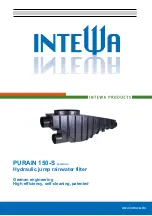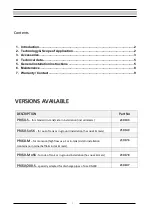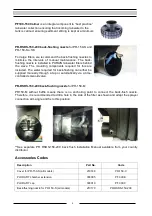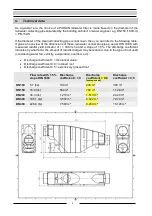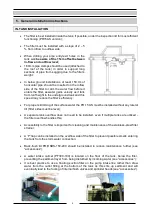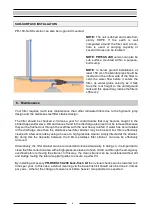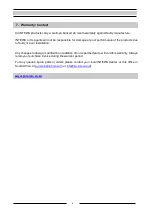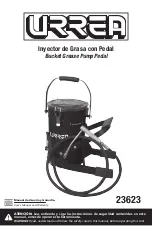
6
5. General installation instructions
IN-TANK INSTALLATION
•
The filter is best installed inside the tank, if possible, under the inspection lid for most efficient
functioning (PR150-S version);
•
The filter must be installed with a slope of 2
– 5
% from inflow to outflow side;
•
When drilling your pipe entry/exit holes in the
tank wall
be aware of the 15cm offset between
in-flow and out-flow level;
•
160mm pipe clamps should be used (attached to
the roof of the tank) in order to support long
sections of pipe from sagging due to the filter’s
weight;
•
In below ground installations, at least 150 cm of
horizontal pipe should be inserted on the inflow
side of the filter to calm the water flow before it
enters the filter, as water gains velocity as it falls
from roof height to the underground tank and this
speed may reduce the filter’s efficiency;
•
For proper skimming of the surface water the PR-150-S must be installed without any lateral
tilt (filter sides must be level);
•
A separate tank overflow does not need to be installed, even if multiple tanks are utilized -
the filter overflow handles this;
•
Accessibility to the filter is important for cleaning and maintenance of the stainless-steel filter
strainer;
•
A ‘P’ trap can be installed on the overflow side of the filter to prevent possible smells entering
the tank from the storm water connection;
•
Back-flush kit PR-RSDS-150-200 should be installed to reduce maintenance further (see
“accessories”);
•
A water intake calmer (PF300-100) is located on the floor of the tank, below the filter,
preventing
the sediment layer from being disturbed by incoming water (see “accessories”);
•
It is best practice to use a floating suction filter on the pump intake line rather than draw
water from the outlet fitting at the bottom of the tank as this stirs up sediment and will
eventually lead to the fouling of internal flush valves and sprinkler heads (see “accessories”).

